Artist Juz Kitson uses her fascination with organic forms to create objects of unsettling beauty.
Juz Kitson moves around her studio, bangles chiming. She doesn’t normally give interviews face to face, she confesses, as she hands over a wad of typed pages she wrote when anxiety about the interview kept her awake the night before. Her studio on the New South Wales Central Coast sits at the point where cultivated garden descends into dense bushland. Close proximity to the bush makes the boundaries between the habitat of humans and wildlife indistinct.
European wasps buzz menacingly around the building’s entry and snakes and rodents have been known to steal in to the studio, attracted to the organic materials. “They go for the feathers and alpaca wool,” says Kitson. “They make nests. I can hear them at night but it is quite nice, this relationship between the animal and the work.”
An intensely private person, the acquisition of her honours project ‘Formations of Silence’ by the unorthodox David Walsh for his Museum of Old and New Art in Tasmania has stimulated growing interest in her work. “It was June 2009 and I had never heard of him. A friend called to say [Walsh] was in Sydney and wanted to come to my studio.” The work was half-finished but after a few minutes, Walsh said he would take the lot. “People were quite unsure of my work. It took him to pay attention and things started to happen.”
The freakish beauty of her art is not for everyone. Like artist Kiki Smith, an obvious influence, Kitson has a penchant for the hidden workings of the body and Frankenstein-like fusings of the animal and human. A trained ceramicist, she transcends the traditional potters wheel, clay and porcelain. She has experimented with fusing foreign materials to ceramics since she was a student watched over by bemused but benevolent teachers at Sydney’s National Art School. “They let me be. I was creating some really strange things, working with latex, plaster and porcelain.”
Her work consists of wall sculptures, taxonomic collections of small works displayed in groups usually built around that enduring signifier of love, death and desire – the heart. It’s unclear whether this organ is human or animal, but the installations thrive on uncertainty. Each sculpture manifests an unsettling clash between the beautiful and the grotesque. She holds a morbid fascination with the fragility of latex and wax, seeing them as symbolic of human decay when used in contrast to petrified ceramic. “Ceramics are petrified and will last a lifetime, whereas the material that is added within will perish, just like us.”
Combined with other materials such as horse hair, wool, bone and snake skin, each work alludes to the natural but swings closer to the alien. Delicate porcelain sculptures could be female genitalia or the buds of flowers.
Rose forms have petals covered in red flocking the colour of congealed blood; others are ethereal coral-like bouquets created out of fine curlicues of porcelain or unmentionable bulbous forms.“I see them as quietly seductive. They are provocative, because underneath they are quite disgusting,” says Kitson. “They are hybrids of nature.”
Walls and surfaces in her studio are covered with bones and antlers, mementoes of overseas travel and regular bone-collecting trips to the historic goldmining town of Hill End. “I spend the week out there, sometimes with a friend and sometimes alone. I find the most obscure materials, and all sorts of different carcasses.”
She collects roadkill – rabbits, turtles and other creatures. Fresh carcasses are brought back to an ants’ nest on the Central coast property and any remaining tissue left for the insects to strip. The bones are then cleaned and bleached before being brought into the studio. “I wasn’t initially interested in using the bone or the skulls in the work – they were just for inspiration – but it is quite nice to pick up a dead lifeless object and then give it new life,” she says.
Some are covered in porcelain and petrified, others dipped in the glossy wax that congeals in scattered metal cooking pots around the studio in shades varying from deep watermelon to a pretty candy pink. Applied to the bones, they give the appearance that the animals have found flesh again. One animal skull is in the midst of a hair transplant operation, its wax skin punctured with a porcupine quill with a pin on one end that has been heated on a tealight flame. Each hair is inserted individually. “It is like a process of meditation. It becomes incredibly meticulous.”
There is a strong sense of ritual to Kitson’s work – in the alternative lifestyle it demands and the constant travel it prompts. It’s a solitary life for a person in her mid-twenties, but she sees it as less of a choice then a necessity. She maintains other studio spaces, one as near as Sydney, another as far away as Beijing where she recently returned from a three-month residency.
She is planning a return to China to spend time in the Jingdezhen, the porcelain capital. “My outlook on my practice has changed. I see it more as a lifestyle. I see this whole process as completely organic. It is a process of evolution and as I grow, the work grows with me.”
This was first published in Vogue Living July/Aug 2012. Download a PDF of the original story. Photographs courtesy of Caroline McCredie and Brett East.







